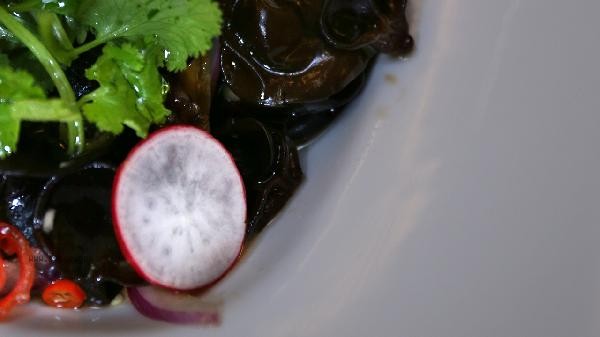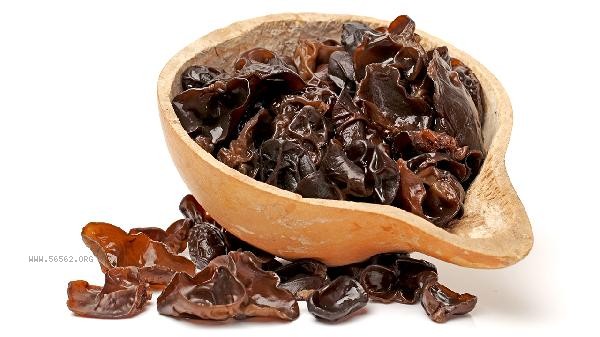Proper cleaning of black fungus requires three key steps: soaking, kneading, and rinsing. The main methods include thorough soaking in cold water, repeated kneading with running water, removal of root impurities, high-temperature blanching for sterilization, and refrigeration for preservation to prevent spoilage.

1. Fully soak in cold water
Dry fungus should be soaked in sufficient cold water for 2-3 hours, and the water temperature should not exceed 30 ℃. Cold water can slowly restore the gelatinous structure of fungus, avoiding the damage of nutrients by hot water. In winter, warm water can be used to accelerate soaking, but the water temperature should be controlled to avoid scalding the bacterial cells. The volume of fully soaked fungus will expand to 8-10 times that of the dry product, presenting a semi transparent and flexible texture.
2. Rub repeatedly with running water
Place the soaked fungus under running water and gently rub the surface wrinkles with fingertips. Flowing water can effectively wash away the sediment hidden in the gills, and the kneading force should be gentle to avoid damaging the meat quality. Special attention should be paid to the cleanliness of the connection between the stem and cap, as this area is prone to residual cultivation substrates such as sawdust.
3. Remove impurities from the roots
Use kitchen scissors to cut off the hard lumps at the base of the fungus, where residual culture medium often adheres. For wild fungus, it is necessary to focus on checking whether there are bark debris embedded, while for artificially cultivated varieties, attention should be paid to whether there are sawdust residues. Keep hands clean during handling to avoid secondary contamination.

4. High temperature blanching sterilization
After cleaning, the fungus needs to be blanched in boiling water for 1-2 minutes to inactivate residual microorganisms and improve taste. Maintain high heat during blanching to keep the water boiling, and immediately supercool after blanching to maintain crispness. This step is particularly important for cold dishes, as it can effectively reduce the probability of microbial contamination.
5. Refrigerate to prevent spoilage
Wet fungus that has not been consumed in a timely manner should be drained of water and refrigerated for no more than 48 hours. Seal the bottom of the container with kitchen paper to absorb excess moisture and prevent bacterial growth. If long-term storage is required, blanched fungus can be packaged and frozen, and after thawing, it needs to be washed again.

It is recommended to control a single intake of 50-100 grams when consuming black fungus in daily life, and reduce it appropriately for those with weak gastrointestinal function. Paired with spices such as ginger and garlic can promote digestion and absorption, avoiding consumption with cold foods. When purchasing, choose high-quality dry products with intact flower shapes and no mold spots. After opening, pay attention to moisture-proof sealing. Properly processed black fungus can maximize the retention of nutrients such as polysaccharides and iron, and exert health benefits such as moistening the intestines, promoting bowel movements, and assisting in lipid-lowering.








Comments (0)
Leave a Comment
No comments yet
Be the first to share your thoughts!